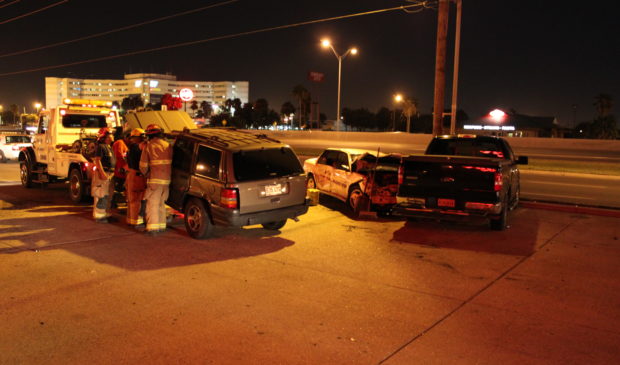Austin Transportation updates citation process to change driver behavior
Wednesday, February 26, 2020 by
Ryan Thornton In an effort to address the city’s road safety crisis, the Austin Transportation Department has come up with a way to make drivers understand the consequences of violating traffic laws. As of yesterday, drivers charged with failure to yield will now be required to appear in court if the violation causes a crash resulting in bodily injury.
Robert Spillar, director of Transportation, said failure to yield – whether to a pedestrian in a crosswalk, a cyclist or oncoming vehicle – is among the top four factors that lead to serious injuries and fatalities. Last year alone, he said, failing to yield was a factor in 16 percent of crashes involving a fatality or serious injury.
Until now, citations for failure to yield were issued at the site of the crash. Even in collisions resulting in injury, drivers could receive their citation, pay their fine and then forget about the event.
With this improvement, the department intends to make such incidents far more memorable. Going forward, drivers ticketed for failure to yield that results in bodily injury will have to show up in court to receive their fines after the crash is reviewed by a prosecutor.
For failure to yield crashes involving injury, Austin Municipal Court will also remove the option to pay fines online or at a court ticket window.
The new process will also improve the accuracy of citations and fines. Whereas previously there was no distinction between crashes causing bodily injury and those causing serious bodily injury, police officers will now be able to write citations based on that distinction. The difference will also be reflected in fines, which are generally higher when there is a serious injury. Charges for failure to yield leading to serious injury are between $1,000 and $4,000.
Prosecution is the latest branch of the city’s strategy to reduce traffic deaths and serious injuries. Until now, Transportation’s partnership with the Austin Police Department focused on increasing enforcement to prevent drunk driving and other common driving behaviors.
In a more robust example of cracking down on dangerous drivers, New York City Council made headlines this month for passing its Reckless Driver Accountability Act, giving the city sheriff’s office authority to impound vehicles until highly dangerous drivers can pass a safety course.
In 2016, following a particularly tragic year on Austin’s roads, the city adopted a Vision Zero plan aimed at eliminating deaths and serious injuries by 2025.
Since then, Transportation has been crunching numbers to come up with the most effective design solutions to make road users safer. Over the next couple of weeks, the department also plans to promote several multimedia campaigns (like this video series) to try to shift driving behaviors.
The department is currently finalizing the details of its Speed Management Program to be ready for launch as soon as a program manager is hired, possibly this spring. The program will study and implement speed reductions where needed from residential neighborhood streets to major corridors.
Despite these efforts, Austin is not on track to Vision Zero. There have been 21 traffic fatalities on city roads so far this year, more than twice the number than this same time last year, when the community experienced an increase in traffic deaths for the first time since 2015.
The fatality numbers are not a good sign; even in 2015, when a total of 102 traffic deaths prompted the city to adopt its Vision Zero plan, there were 16 fatalities by the end of February.
However, there may be other reasons for optimism. Jacob Barrett, a spokesperson for the Transportation Department, told the Austin Monitor that while there’s been a sharp increase in traffic deaths so far this year, the number of total crashes has gone down. Serious injuries, a key element of Vision Zero, are down 35 percent compared to last year. For the department, Barrett said this could be an indication of progress, but not a reason to relax efforts. “We’re only six weeks of data in 2020 and we have a long way to go.”
Photo by Gabriel Saldana made available through a Creative Commons license.
The Austin Monitor’s work is made possible by donations from the community. Though our reporting covers donors from time to time, we are careful to keep business and editorial efforts separate while maintaining transparency. A complete list of donors is available here, and our code of ethics is explained here.
You're a community leader
And we’re honored you look to us for serious, in-depth news. You know a strong community needs local and dedicated watchdog reporting. We’re here for you and that won’t change. Now will you take the powerful next step and support our nonprofit news organization?









